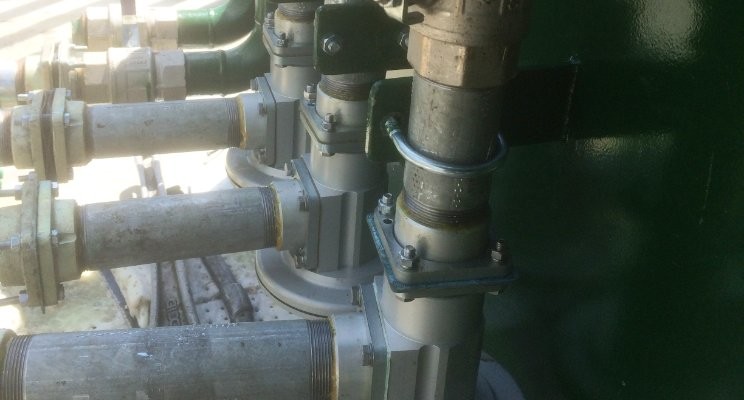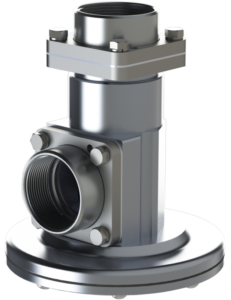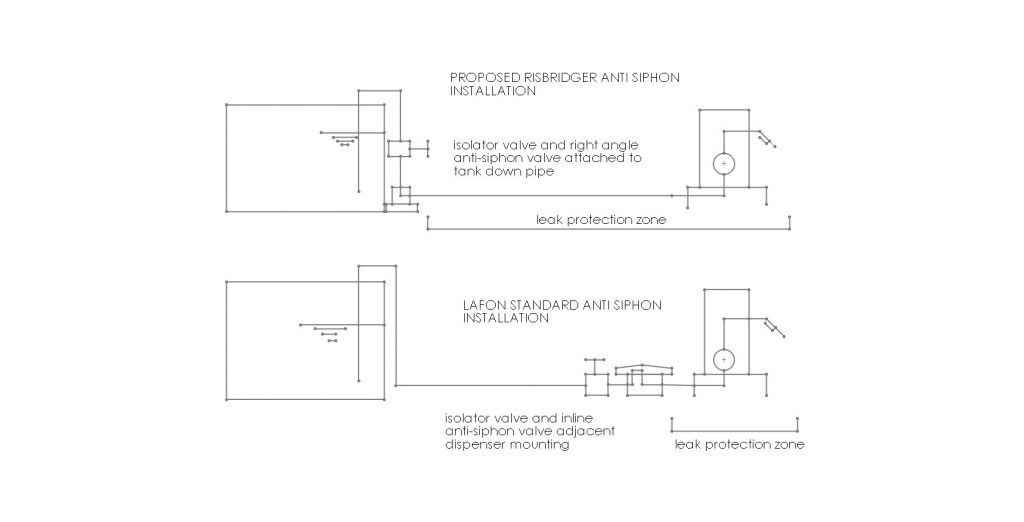The Anti-Syphon Valve: How, What and Why
This week we take a look at the anti-syphon valve, its purpose, and the choices available.
The main purpose of an anti-syphon valve is to prevent fuel loss on a massive scale from an above ground storage tank. This type of leak usually results at a low level or from the dispenser. So what makes a Risbridger Anti-Syphon valve unique (and better)?
Several things, actually.
1. A high flow capacity of 180L/min
2. A single 90° flow direction change as opposed to the four needed by some competitor products
3. No need for the 90° elbow at the bottom of the tank (this provides Syphon leakage protection for all tank to dispenser interconnecting pipe work which is vital).
4. A direct connection to 2” of pipe work.
5. The internal design of the valve isolates the main flow from the diaphragm, a source of wear and tear, thus allow a vacuum connection orifice to hydraulically dampen valve “hunting” at low flow rates.
But where the Risbridger Anti-Syphon valve really outperforms competitor products is quite simply this – only one valve is needed per installation, reducing cost drastically.
Previously, in industries requiring high flow rates (Marina, locomotive, truck stop), it was necessary to use two competitor valves in parallel, in order to accommodate required flow rates. These two valves have a tendency to work against each other, causing what is known as ‘hunting’, where valves open and close repeatedly as the fuel battles to find the correct path between them.
Our unique single valve solution is not only efficient, it’s also cost-effective, so get in touch with the team at Risbridger today for further information on this and our other quality engineering solutions.
Keith Robinson
Engineering Director at Risbridger Ltd




